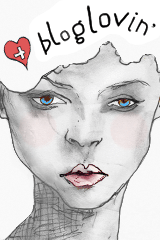Now there is nothing new in the flawed logic that it is the camera that makes the picture, even though the camera itself is an inanimate object with no mind of its own.. And that is as true of today's highly programmed digital cameras as it was of whatever film camera Sam may have chosen to create his iconic pictures with. I think we can all agree it's the chef that makes the meal, not the stove after all and the same goes for the camera; it's the photographer that makes the pictures.
So what caused this old photography anecdote to pop back into my mind? On the one hand I have been reading a fascinating book about how our brain really works, how we think and how we perceive the outside world - the world we think we see. In a nutshell we all see a lot less than we assume we do, and the brain is very very good at filling in the visual gaps on the fly.. So that's one part of why I am thinking about Sam.. And then there is the growth of online web sites for booking photography services; with the one I came across most recently referring to itself as the UBER of Photography. This site also prominently featured the
On the surface these online photography booking systems seem attractive because they attempt to make photography into a fixed commodity, like a taxi trip from A to B or buying a new stove. Simplistic price points and deliverables (number of shots - hours worked) give an illusion of choice and that one has control. A final fixation on the camera (just one part of a photographer's tool kit) is an easy point of reference. No really it's an amateurs most obvious point of photographic reference, much easier than understanding the nature of the photoshoot itself. "What camera do you use? Nikon or Canon.." Not that it probably matters anyway. All in all you have something that feels like it should be all you need to know to take control of your marketing, and at a price point you can choose for yourself. It's a trap!
Which brings me back to how our brains work. Now I am no neuroscientist, nor am I a psychologist with a degree in marketing. I can however tell you that when I go to a life drawing group and put pencil to paper, my eyes and brain tell me I am doing well; until I need to join the last lines together to complete the picture. At that late point in time, unless I have been practising regularly I find out I am not so good a judge of what I thought I saw and what I put down on paper after all.
My brain filled in the gaps for me, but in the end, I have a gap I cannot fill, the drawing is imperfect! This is why I practice my photography every day. If not on commercial jobs, then on personal projects or just photographing things that interest me. This is also why I went to art school and assisted photographers - back in the day - who were much better than me. So I could learn to see what was really there, to reduce the brain-filled-gaps with what is really there - and see what is not! To learn to see creatively and develop a vision for my craft as a professional photographer.
While cameras may be a commodity; photography never will be. There are just too many variables. And as the saying goes, "if you are not sure where you are going, you might end up somewhere else." This can be true of photography. So thrill of the unknown journey aside.. when it comes to choosing a photographer, take a good look at their portfolio or website; keep an eye out for consistency; if you don't know what you are looking at, or for, enlist specialised help - editors or designers. When you find a photographer with the photographic vision that suits you. Give them a call or send them an email, I can assure you, they will be very happy to hear from you; and you will be making the best decision you can to get the most fantastic pictures possible!
Telling Stories in Pictures all over the world..
Kent Johnson, Sydney, Australia.
0433 796 863


Some of us walk into the forest and cant see for all the trees in the way You Sir Walk into the forest and see the leaves the trees the shadows the animals the play of light as it refracts through the atmosphere
ReplyDeleteThanks Russ; yes it's all about looking at things and NOT being tricked by the mind into seeing things that aren't really there. Because the camera records it all, the photographer needs to be very certain that what in needed is there and what shouldn't be is not! Looking and seeing work best when done in an active manner, and practice, like most things helps. Cheers, thanks for your beautiful comment. Kent.
Delete